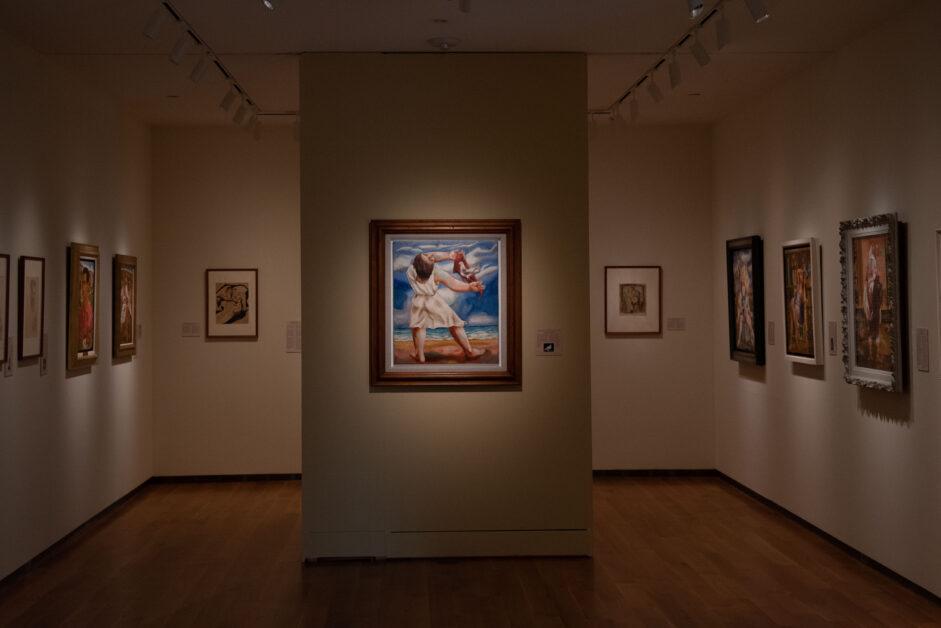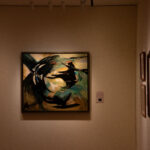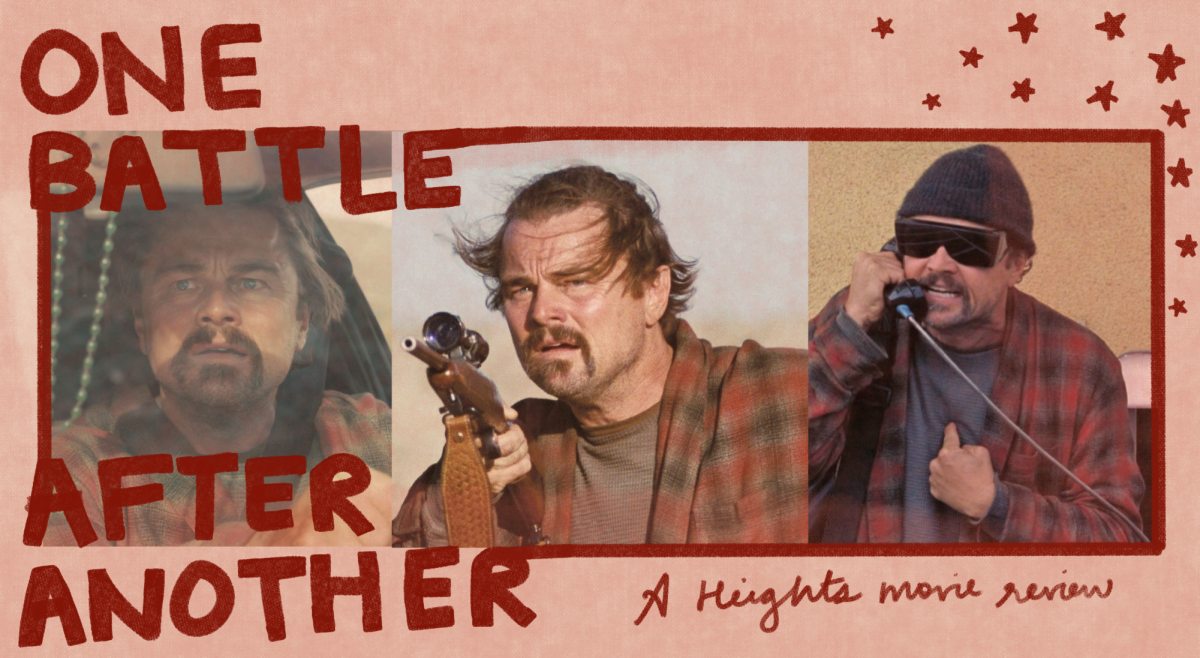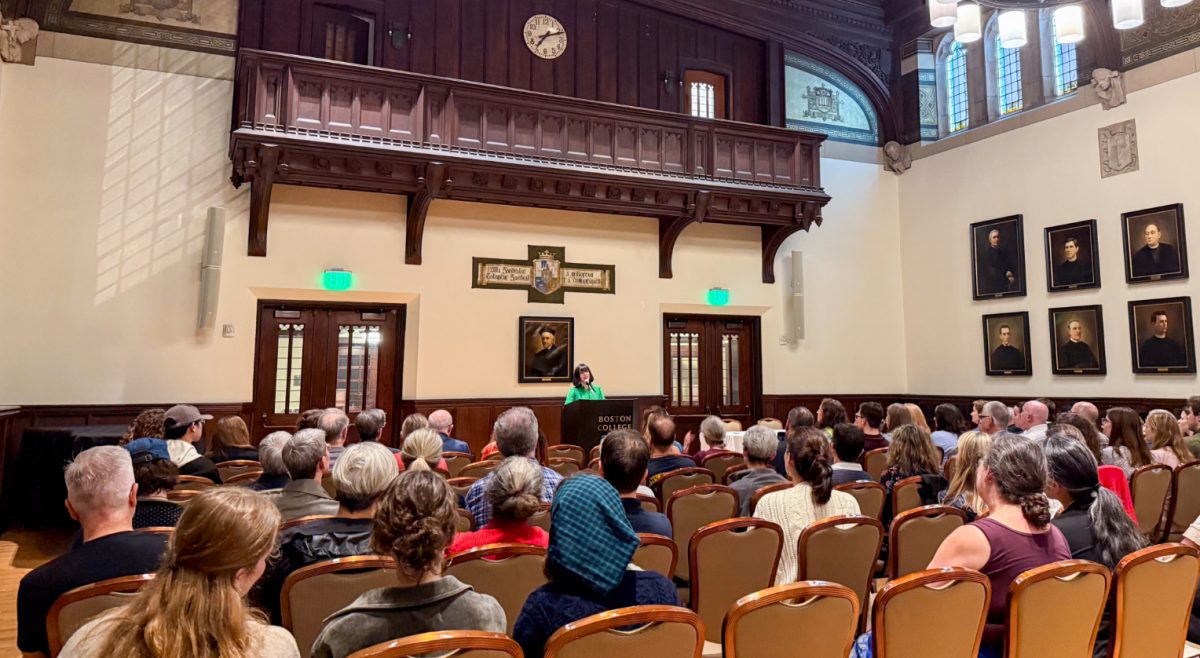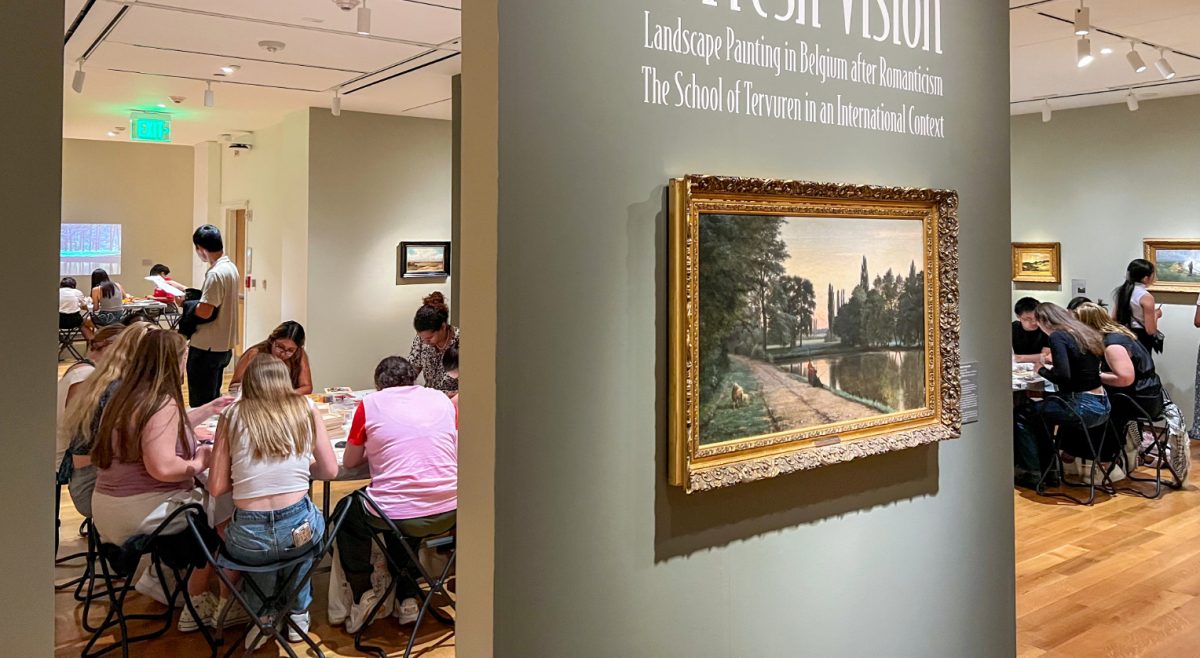The paintings hanging in the McMullen Museum of Art’s new exhibit, ‘Mariano: Variations on a Theme,’ have flown from museums and personal collections across Europe and the United States. Many of the pieces are meeting for the first time since they were completed by the Cuban modernist painter Mariano Rodríguez. Rodríguez’s connection to the Cuban Revolution has prevented his work from being shown extensively in the United States. The new exhibit, which will remain open until Dec. 5, 2021, provides visitors an exclusive look into the evolution of Rodríguez’s work with over 140 paintings and drawings from the artist.
Elizabeth Goizueta, a professor in the Hispanic Studies department and the exhibition’s curator, spent eight years conceptualizing and organizing the groundbreaking exhibit. In 2013, Goizueta encountered Rodríguez’s work on a trip to Cuba for a different project and was inspired to share the complete breadth of his work—spanning from the 1930s to the 1980s—with an American audience.
The exhibition is making history as the first major exhibition of Rodríguez’s work and includes works that have never been seen before. Kate Shugert, manager of publications and exhibitions at the McMullen Museum, worked alongside Goizueta as they collaborated with Alejandro and Dolores Rodríguez, Rodríguez’s two children who manage his estate, to highlight pieces from the artist’s archive that had never been seen before.
The exhibit groups Rodríguez’s work into the different styles he explores in each decade as he engages with various artistic movements, including fauvism and abstract expressionism. But, his works are connected by Rodríguez’s continuous exploration of Cuban identity and recurring motifs of roosters, vegetation, and peasants. The organization crafts a historical storyline of his career that’s meant to make the range of his artistic works more accessible to visitors, Goizueta said.
“I hope that people understand that we shouldn’t just label each other and get stuck on one image or one interpretation,” Goizueta said. “Artists evolve, their imagery evolves and takes on different forms and different interpretations, much like people do.”
Once through the museum’s glass doors, the white walls are alight with the vibrant colors Rodríguez used to shape the dynamic, exaggerated bodily forms he painted during his formative artistic years in Mexico. The pieces hanging in the back of the second floor gallery possess obvious political meaning as Rodríguez protests the removal of Cuba from the Organization of American States. An American flag appears in the background of a canvas crowded with yellow figures—harshly defined against a dark background—who gaze outward to the viewer in a moment of violent confrontation.
A catalogue of Rodríguez’s work has also been released as an accompaniment to the exhibit—compiling images of his paintings and scholarly essays on his work. The publication, which is also titled “Mariano: Variations on a Theme,” can be purchased online and is available for browsing in the gallery. The museum is also offering a variety of events related to the exhibit throughout the semester, including lectures and tours.
The museum hosted an opening reception for supporters of the museum and contributors of the exhibit earlier this month, inviting many family members of the artist. Shugert described the poignant moment when Rodríguez’s daughter saw a painting of herself as a young child hanging on the gallery wall for the first time as the past and present converged on the painting.
“It really brought home that these are not just beautiful artworks that tell a lot about Cuban artists at a particular time, but these are people’s family members, and it was just so fulfilling to see the closest people in the artworks connect to them again,” Shugert said.
Featured Images by Nicole Vagra / Heights Staff
Update 9/23/2021 4:34 p.m.: This article was updated to state that pieces came from Europe and the United States. They were not flown from Cuba as was previously stated. Organization of the American United States was corrected to say Organization of American States.

